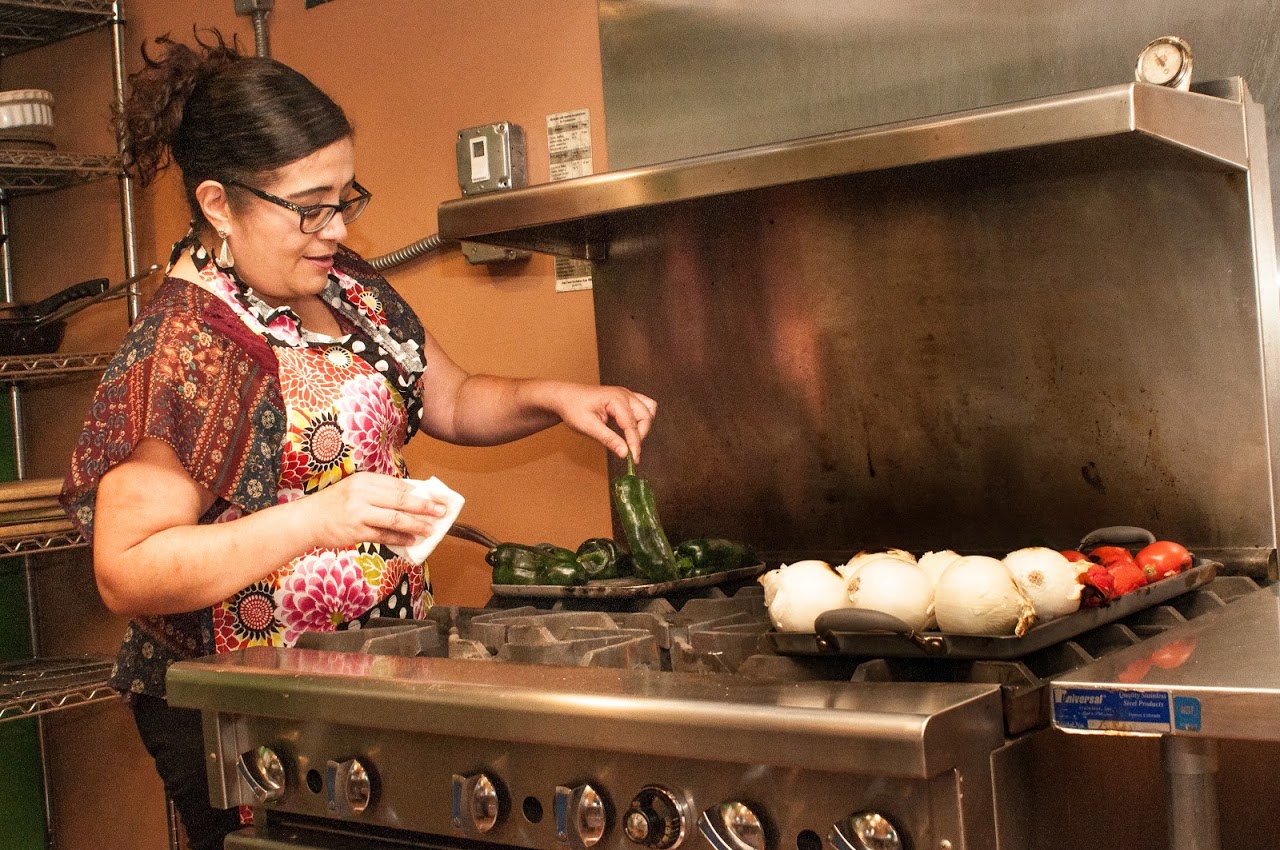Some information may be outdated.
There’s nothing quite like the taste of fresh, garden ripe tomatoes, and a group of local food producers would like to see more of them in restaurants and on dinner tables in Moab.
On Tuesday, Aug. 23, a group of 30 local farmers, restaurant owners, grocery store managers and local citizens met for a round table discussion at the Moab Arts and Recreation Center (MARC) on how to increase consumption of locally grown food.
“We’re here to support local farmers,” Wes Shannon told the Moab Sun News. “Local stuff does wonders for your menu. It’s like night and day compared to what you get off a truck.”
Shannon and his wife Penelope, who own the Love Muffin Café, said they make everything from scratch, and that their commitment to high quality food relies on produce from local farmers.
Local restaurateur Alex Borichevsky agreed.
“There’s a good base for local food here,” he said. “Anytime we can buy something that has ripened in the last day or two, it’s going to taste that much better.”
Borichevsky, who co-owns Sabaku Sushi and the recently opened 98 Center, said that in addition to getting food ripe and ready to eat, buying locally reduces the carbon footprint.
“Instead of making such a big circle and spending so much energy on shipping, why not grow high-quality stuff locally?” Borichevsky said.
But in an age of large-scale farms, and food trucks that deliver everything from blueberries to pre-made sauces, local farmers are struggling to find buyers for their products.
“We’re at the point where it’s like, ‘Should we stay or should we go?’” local farmer Chris Pfenning said.
Pfenning and his wife Kelly operate Hole Foods Farms, an off-the-grid, organic farm at Brown’s Hole 20 miles southeast of Moab.
The Pfennings used to sell their produce at the local farmers market, but a decline in customers has forced them to rely exclusively on direct sales to restaurants, a path they say is difficult.
“We’ve talked to a lot of restaurants in town,” Pfenning said. “A lot of them just don’t have time for us.”
Enter the Utah Farm-Chef-Fork program. Funded through a U.S. Department of Agriculture grant awarded to the Utah State University Sustainable Community Extension office, the program is designed to enhance community vitality and reduce the number of miles that food products travel by connecting local farmers and restaurants.
USU-Moab Sustainable Community Extension Specialist Ros Brain said that in working with communities in different counties throughout the state, the message was the same.
“We discovered a need in these communities to connect local producers with local buyers,” Brain said.
Launched in 2012, Farm-Chef-Fork sponsors trainings in direct marketing and hosts farm tours for chefs and restaurant owners. The tours allow chefs to sample products and identify perceived barriers and benefits to purchasing locally grown food.
Brain said that the time is right for sustainable, locally grown food and that it makes good economic sense as well. She cited a study from the National Restaurant Association that reported seven out of 10 customers were more likely to visit a restaurant offering locally produced items.
“The demand is there,” she said.
Brain said that the grant was recently extended and that it has become apparent that the next step locally isn’t more events.
“There is a missing link in our food system, so we decided to have a discussion on local food strengths and weaknesses,” she said.
Participants at the meeting discussed five topics surrounding local food, including ways to expand opportunities for local food supply and demand; invigorate the farmers market; deal with food waste; and generate a food hub for distribution of produce.
Suggestions for increasing local demand included getting more restaurants on board with buying locally grown produce, and by making the word “local” the expectation.
“I see the amount of people coming to town, and there is so much more potential,” Pfenning said.
But Pfenning said that the whole food sustainability movement starts with things like earning a decent wage and being able to afford housing.
“You’ve got to work that into the whole local food scene,” he said.
Youth Garden Project (YGP) Executive Director Delite Primus agreed.
“We have to create a sustainable circle,” Primus said. “It’s one thing to grow, and it’s another thing to sell. Wages and the cost of the product are all related.”
Primus said that as more and more people grow disconnected from their food, YGP focuses much of its energy to address those trends.
“Connecting people with the process of growing creates healthy people and healthy communities,” she said.
Borichevsky said that as a buyer, he needs to know what’s going to be available – a sentiment shared by by other restaurant owners. He said that to an extent, he is able to adjust his menu based on seasonal availability, but that reliability is key.
“We’re trying to revert to old ways of eating food when it’s ready, when it’s supposed to be eaten, not just strawberries when we want strawberries,” he said.
USU-Moab Sustainability Intern Shiree Duncan said that supporting local farms and creating a cycle where food is produced and consumed locally is also a way to help diversify the economy.
“These are local businesses,” she said.
Brain said it is unfortunate that local food is struggling in Moab, and she lamented the closing of a few small farms.
“Moab is such a tight-knit, eclectic and energetic community,” Brain said. “It’s amazing that it doesn’t have the strength here that it could.”
Program aims to connect growers with local markets
Instead of making such a big circle and spending so much energy on shipping, why not grow high-quality stuff locally?
Appreciate the coverage? Help keep local news alive.
Chip in to support the Moab Sun News.





